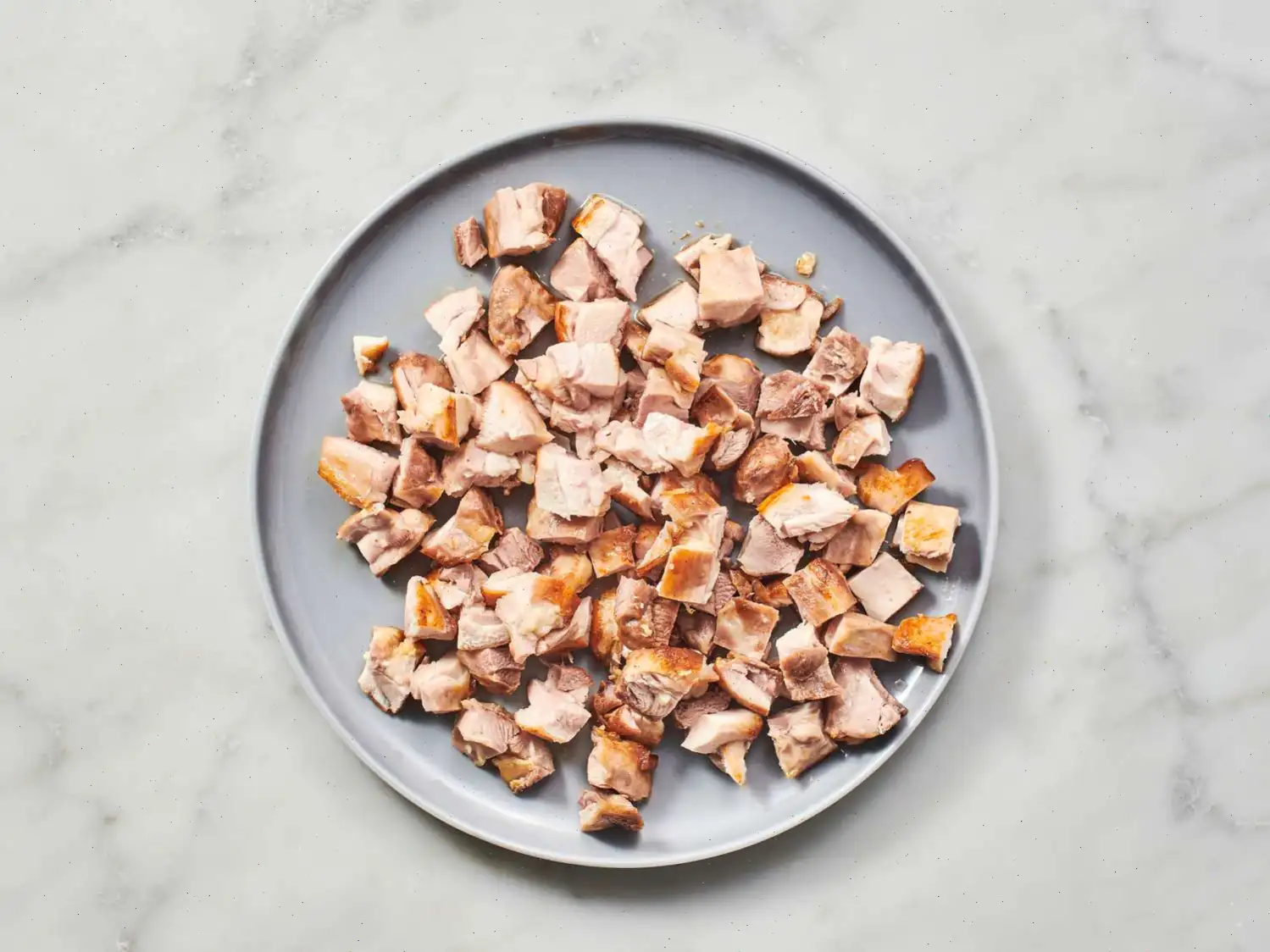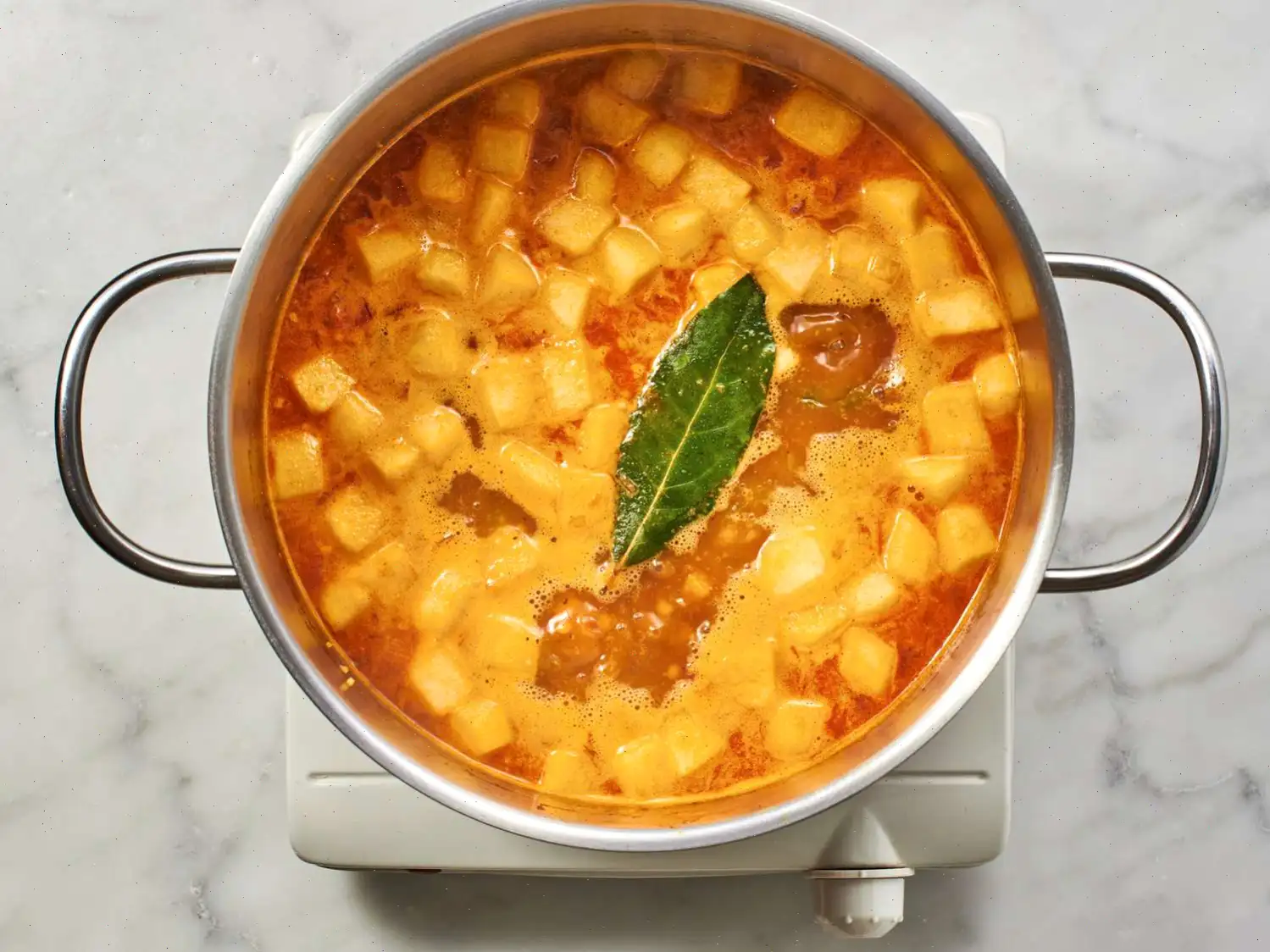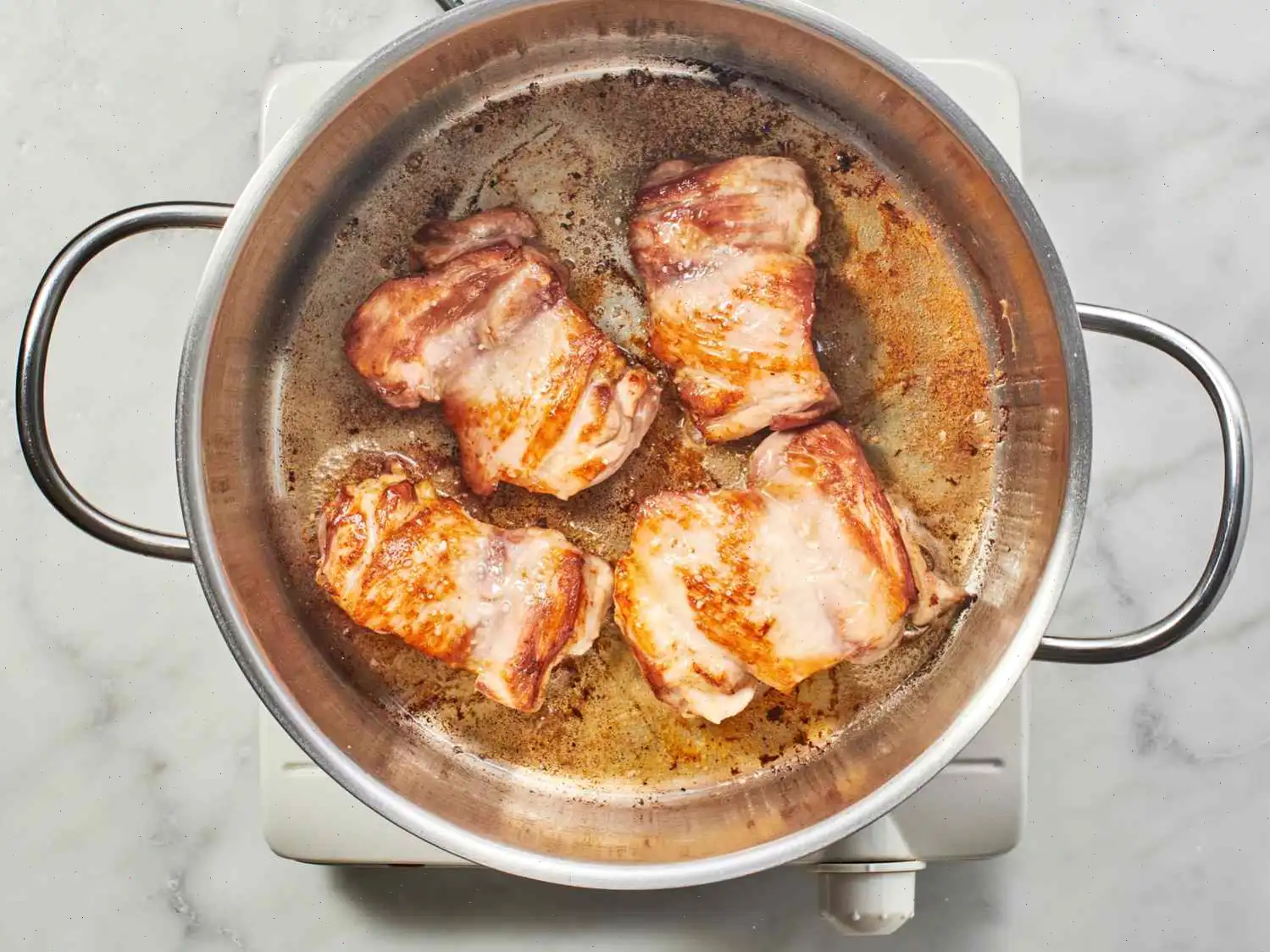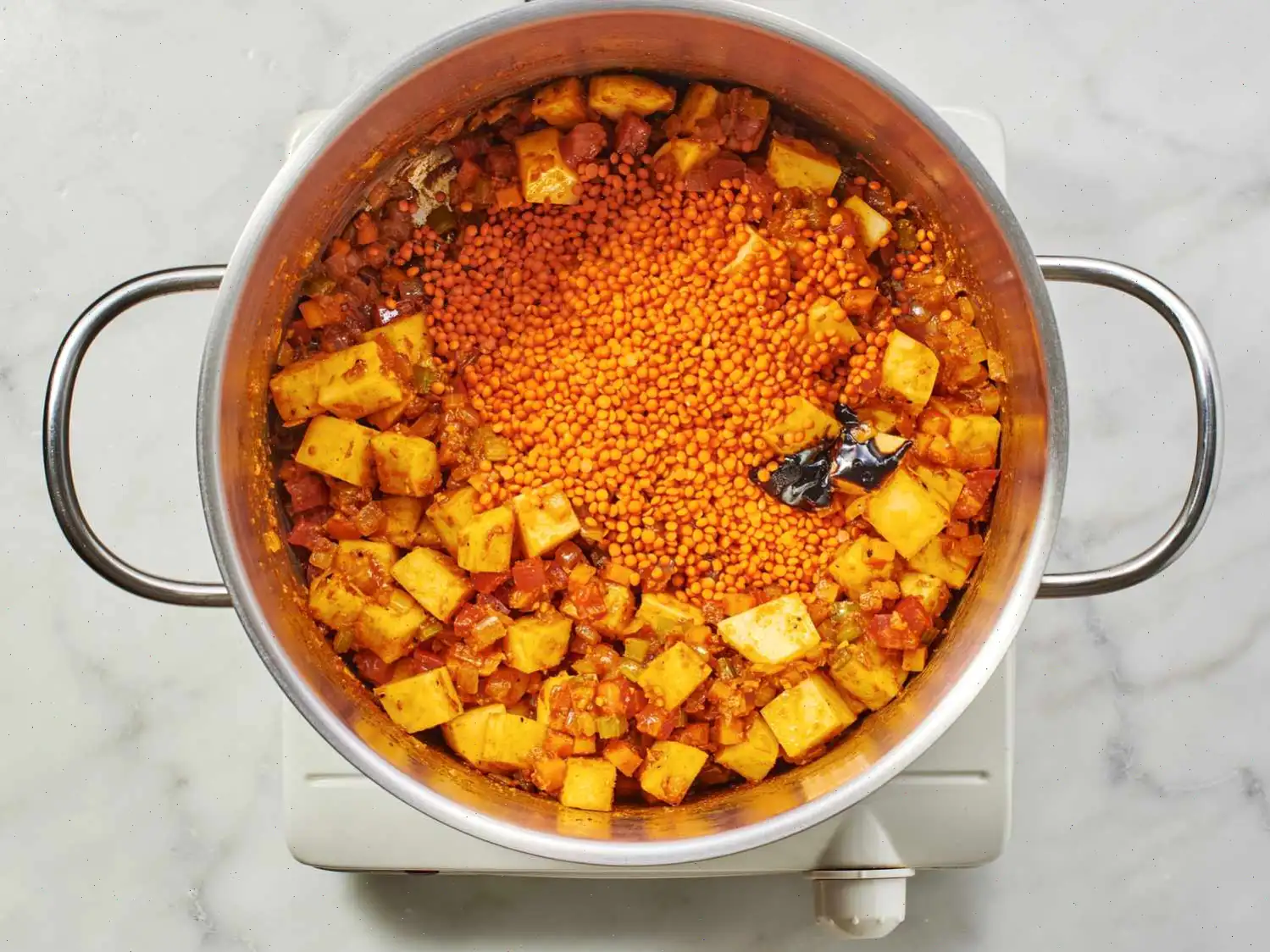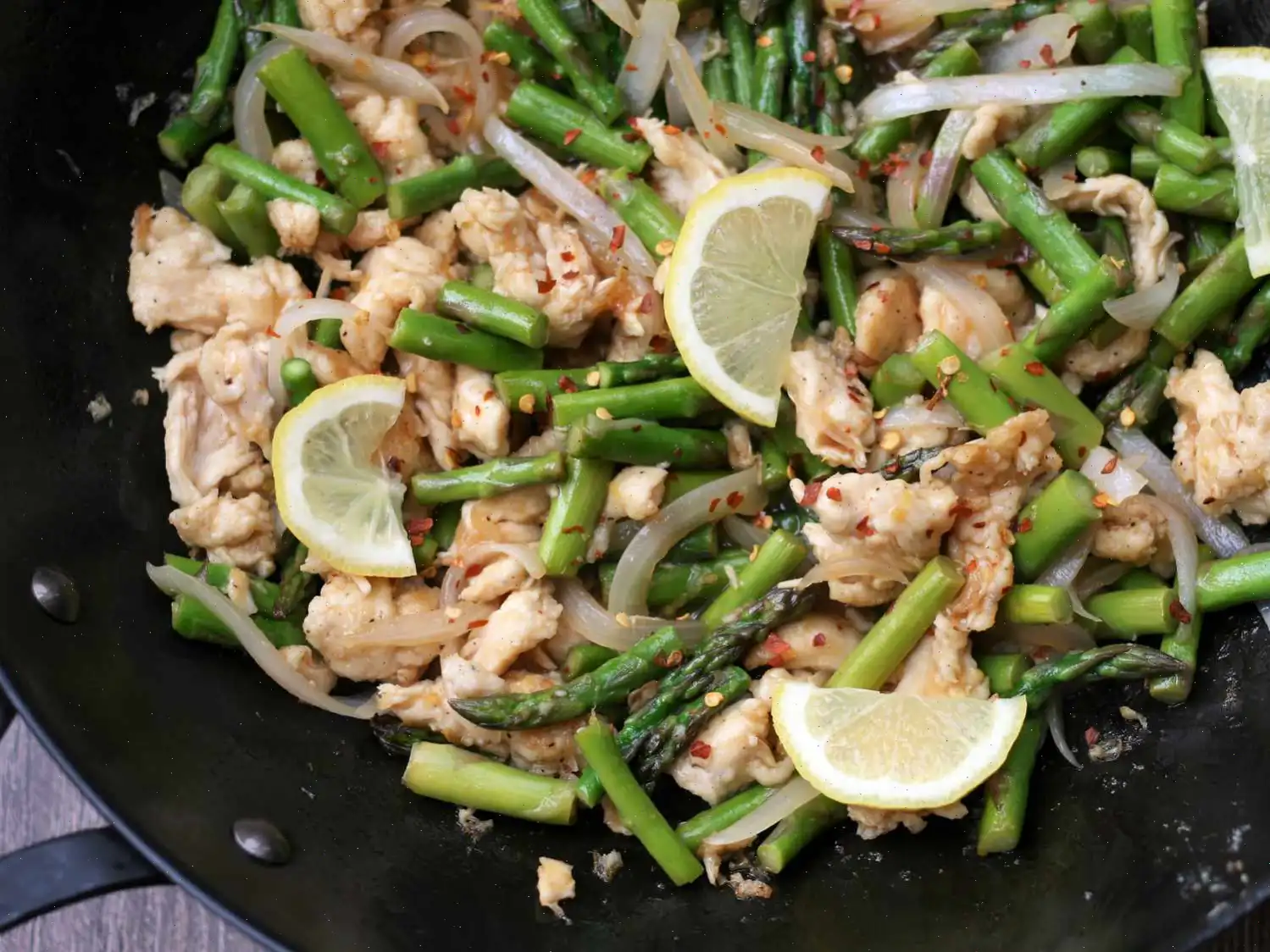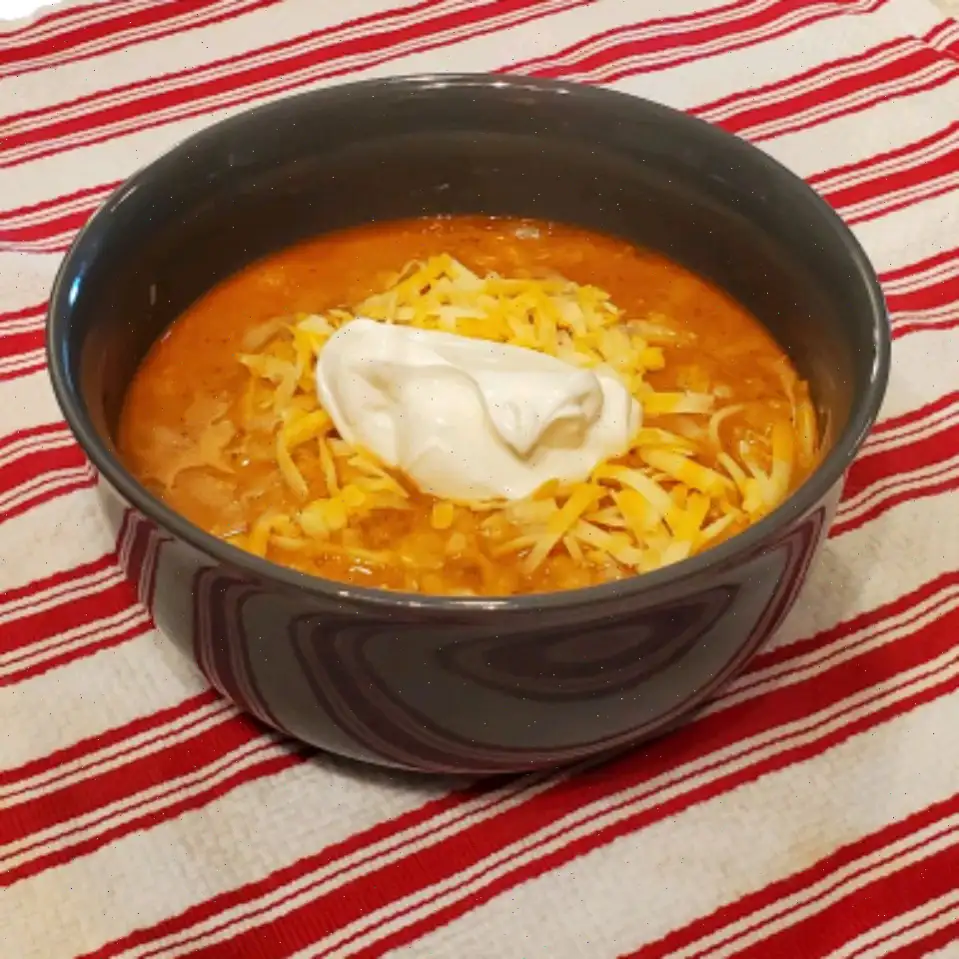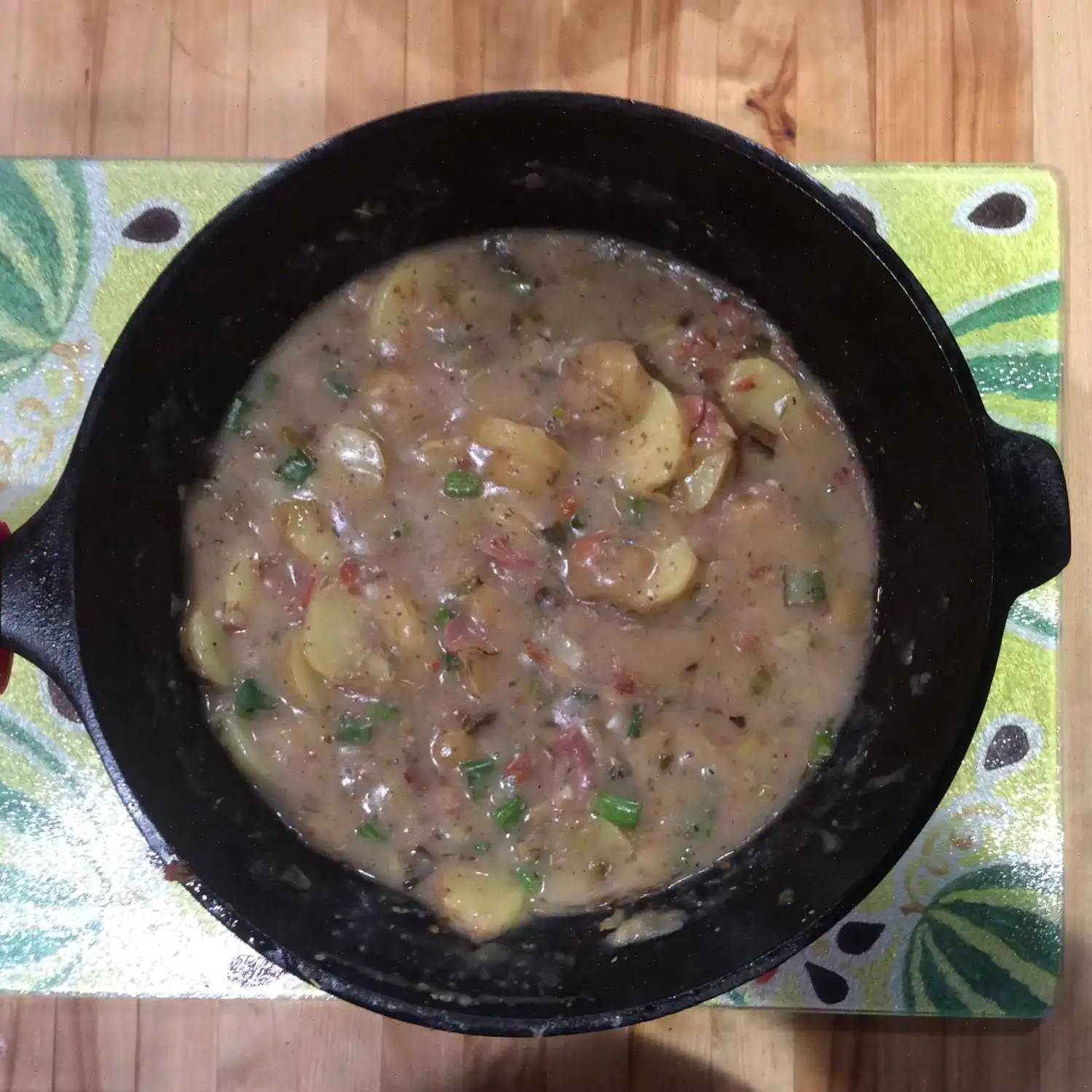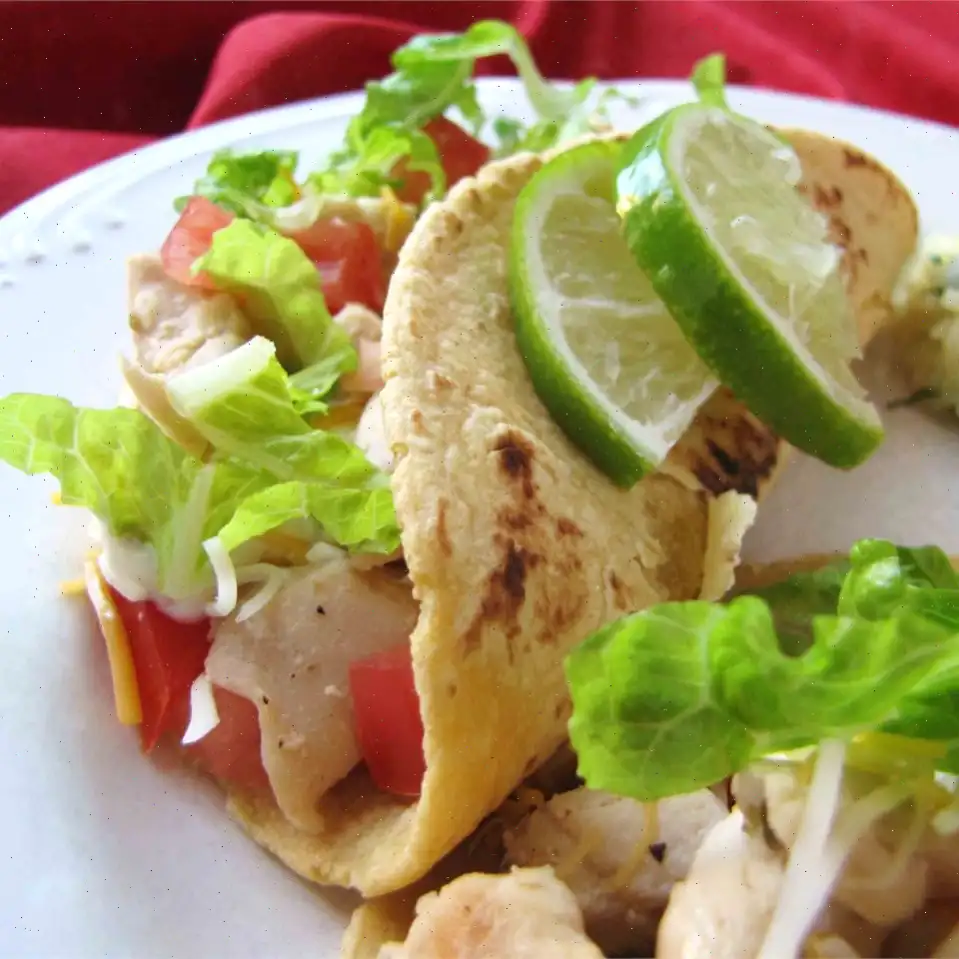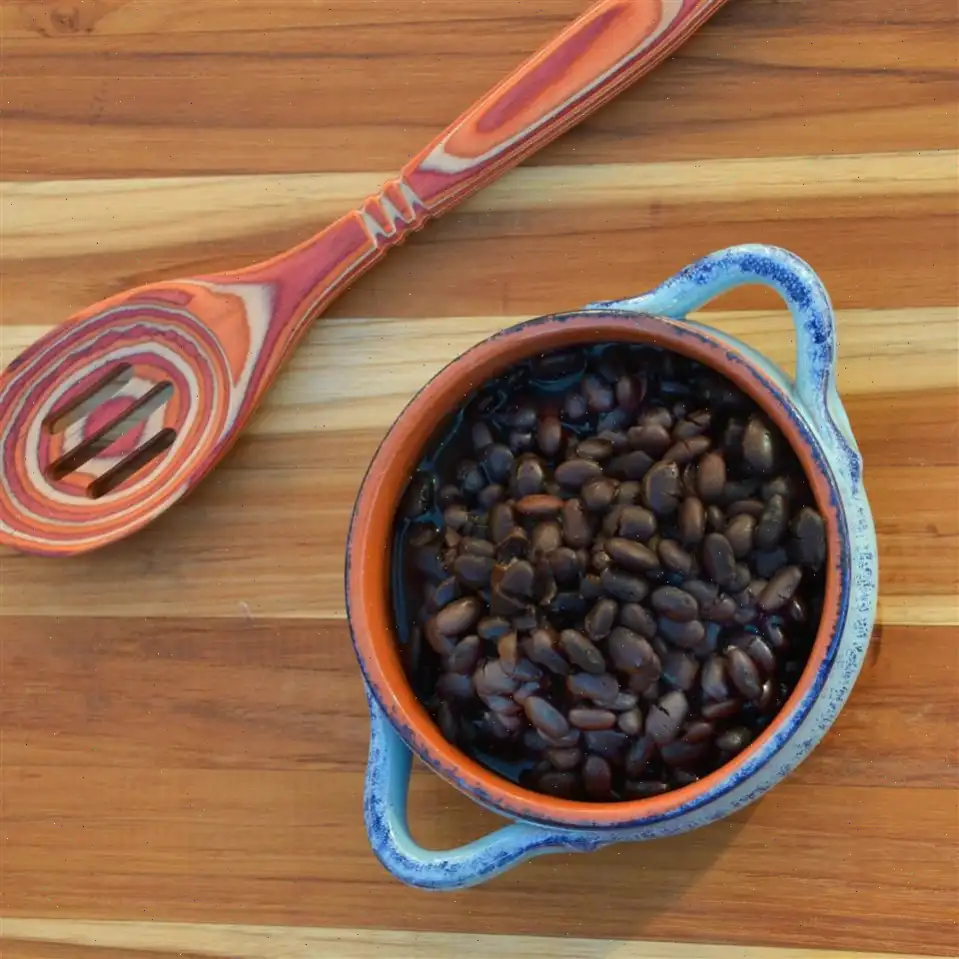
Chef John's Mulligatawny Soup Recipe
Mulligatawny Soup has been requested hundreds of times over the last decade. Although theres no classic recipe or standard list of ingredients, this version is bursting with flavor. The name "Mulligatawny" translates to "pepper water," so it should be spicy and full of vibrant seasoning. While its easy to nail the spice levels, the balance of sweetness can be tricky. We need just enough sweetness to balance out the heat, but not so much that it becomes cloying. By letting the subtle sweetness of apples do the heavy lifting, this soup achieves the perfect balance of flavor. The ingredient list might be long, but trust me its worth it!
Ingredients (Yields 6 servings)
- 1 tablespoon unsalted butter
- 1 tablespoon vegetable oil
- 1 cups boneless, skinless chicken thighs
- 1 teaspoon kosher salt (or more to taste)
- 1 tablespoon curry powder
- 1 teaspoon garam masala
- teaspoon ground cumin
- teaspoon freshly ground black pepper
- teaspoon ground mustard
- teaspoon ground coriander
- teaspoon cayenne pepper
- 4 cloves garlic, minced
- 1 tablespoon finely grated fresh ginger
- 1 large yellow onion, diced
- 2 carrots, diced
- 2 stalks celery, diced
- 1 tablespoon tomato paste
- 1 cup cubed Yukon Gold potatoes
- cup seeded and diced tomato
- 2 small Granny Smith apples, peeled, cored, and diced
- cup dry red lentils
- 1 bay leaf
- 1 teaspoon tamarind paste
- 6 cups chicken broth
- 3 tablespoons coconut cream (Optional)
- cup plain Greek yogurt (or to taste)
- cup chopped fresh cilantro (or to taste)
- cup sliced green onion (or to taste)
- 1 pinch red pepper flakes (or to taste)
Directions
Step 1: Gather all your ingredients before you begin. This ensures that youre fully prepared for the cooking process.
Step 2: In a large soup pot, melt butter and vegetable oil over medium-high heat. Add the chicken thighs and season with kosher salt. Let the chicken brown for 4-5 minutes on one side, then flip and brown on the other side for another 4-5 minutes.
Step 3: While the chicken browns, combine curry powder, garam masala, cumin, black pepper, ground mustard, ground coriander, and cayenne pepper in a small bowl. This will be your spice blend.
Step 4: Once the chicken has browned, remove it from the pot and set it aside to cool slightly. Once cool enough to handle, roughly chop or shred the chicken.
Step 5: With the chicken removed, reduce the heat to medium and add your spice blend to the pot. Stir and cook for about 30 seconds until the spices become fragrant. Add the minced garlic and grated ginger, then cook for another minute.
Step 6: Add the diced onion, carrots, and celery. Season with salt and cook, stirring occasionally, until the onions become translucent, about 3-4 minutes.
Step 7: Stir in the tomato paste and let it cook for another 3 minutes, allowing the flavors to develop.
Step 8: Add the cubed potatoes, diced tomatoes, and apples to the pot. Stir well to combine.
Step 9: Add the red lentils, bay leaf, and tamarind paste. Pour in the chicken broth and stir to combine. Raise the heat to high, then add the coconut cream (optional). Bring the mixture to a simmer.
Step 10: Once it reaches a simmer, stir well, reduce the heat to medium-low, and let the soup simmer for about 30 minutes, stirring occasionally.
Step 11: After 30 minutes, stir in the chopped chicken and any juices that have accumulated on the plate. Let the soup continue to simmer, stirring occasionally, for another 20-30 minutes, until the vegetables are fully cooked and the lentils are tender. The soup will have thickened by now.
Step 12: Taste the soup and adjust the seasoning as needed. If you prefer a little more sweetness, feel free to add a spoon of sugar or more coconut cream.
Step 13: Serve the soup in warm bowls, topped with a dollop of Greek yogurt, fresh cilantro, and sliced green onions. For an extra kick, sprinkle with red pepper flakes.
Chef's Notes: Feel free to use only butter or only oil for browning the chicken, depending on your preference. You can also substitute Yukon Gold potatoes with any potato variety you like.
Nutrition Facts (per serving)
- Calories: 263
- Total Fat: 9g (12% DV)
- Saturated Fat: 3g (15% DV)
- Cholesterol: 54mg (18% DV)
- Sodium: 1591mg (69% DV)
- Total Carbohydrates: 29g (10% DV)
- Dietary Fiber: 6g (20% DV)
- Protein: 18g (35% DV)
- Potassium: 553mg (12% DV)
* Percent Daily Values are based on a 2,000 calorie diet. Your daily values may be higher or lower depending on your calorie needs.
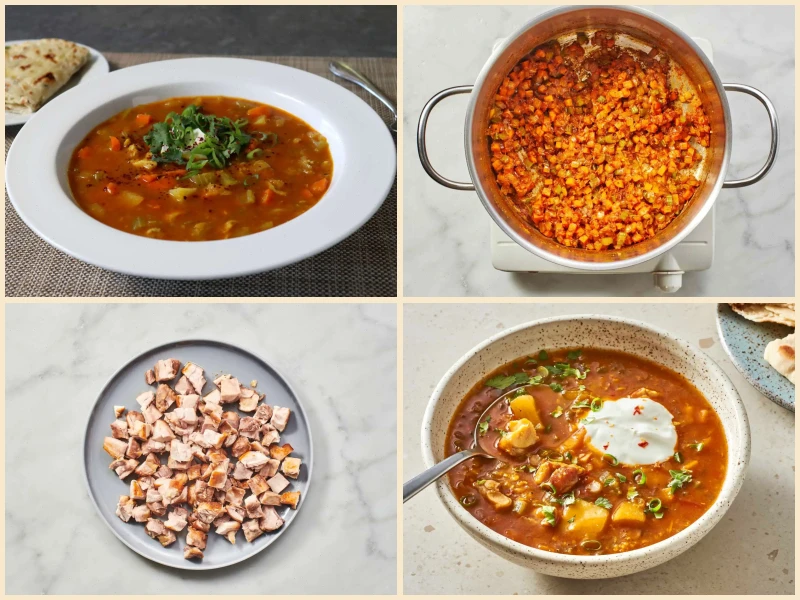

Origin of Mulligatawny Soup
The name "Mulligatawny" comes from the Tamil word "Milagu Thanni," which translates to "pepper water." It originates from South India, where it was initially a light, broth-based dish made from tamarind, pepper, and various spices. The dish was adapted by the British during the colonial period and became more robust, incorporating ingredients like meat, lentils, and coconut milk, creating the richer and creamier version we know today. Mulligatawny soup's evolution reflects the fusion of Indian and British culinary traditions, resulting in a hearty and flavorful dish.
Regional Variations
Mulligatawny soup has a variety of regional adaptations across India, Sri Lanka, and even the UK. In Southern India, it is often served with rice and is more of a thin, peppery broth, whereas in Western adaptations, particularly in the UK, the soup has evolved into a thicker, creamier version. The British even introduced ingredients such as apple and cream, which are not commonly used in traditional Indian versions. In India, it is also common to see variations with different meats like lamb or chicken, or even vegetarian versions with vegetables and legumes like lentils.
Differences from Similar Dishes
While Mulligatawny is often grouped with curry soups, it stands apart due to its distinct balance of flavors, which includes a tangy sweetness from apples and tamarind, along with a spicy depth from a variety of curry spices. Unlike a typical curry, Mulligatawny is much more soup-like, with a thinner consistency. The addition of lentils, potatoes, and sometimes chicken makes it heartier than many other Indian soups. While dishes like "sambar" or "rasam" share some flavor profiles, Mulligatawny tends to be creamier and richer, often incorporating coconut cream or yogurt for added texture.
Where It Is Typically Served
Traditionally, Mulligatawny is served as a comforting soup in both Indian and Western kitchens. In India, it is commonly enjoyed as a starter in a multi-course meal. It pairs wonderfully with rice or naan, offering a burst of flavor before the main course. In Western countries, particularly the UK and the United States, Mulligatawny is often found in Indian restaurants and has become a popular choice in both casual and fine dining settings. The soup is frequently served during the colder months, thanks to its warming, spicy nature, and is often enjoyed as a filling lunch or dinner.
Interesting Facts
- The earliest versions of Mulligatawny were vegetarian, with the main ingredients being tamarind, pepper, and spices. Meat was introduced later when the British began to adapt the recipe.
- In colonial times, British soldiers stationed in India would request "Mulligatawny" as a way to bring some heat and flavor to their meals, often in a much milder version compared to the Indian original.
- Despite its Indian roots, Mulligatawny became a popular dish in England in the 19th century, and it was even included in the menu of several royal events.
- The soup's versatility allows for numerous variations; ingredients like coconut milk, yogurt, and lentils create different textures and flavor profiles, making it a dish that can be easily tailored to individual tastes.
Chef John's version of Mulligatawny Soup offers a perfect balance of spice and sweetness, using apples and tamarind to balance the depth of curry flavors. With chicken thighs, lentils, and a medley of vegetables, its a hearty and satisfying meal that brings a comforting warmth to your table.
You can listen to this recipe in AI audio format. Simply click the play button below to listen to the content in a format that suits you best. It’s a great way to absorb information on the go!
FAQ about Chef John's Mulligatawny Soup Recipe
Comments
Jeffrey Hall
04/19/2024 08:01:20 PM
This dish was delicious! I only had sweet potatoes on hand, so I substituted one apple (not a granny smith because I didn't have one). I also used frozen bone-in chicken thighs, but everything still blended together nicely with great flavor.
Rachel Roberts
08/29/2022 05:16:47 AM
This is definitely the best mulligatawny recipe I have ever tried! It has all the flavors and ingredients you could ask for. The only modification I made was substituting one can of Rotel tomatoes with green chilies for the fresh tomatoes as called for in the recipe.
Kenneth Hernandez
03/04/2024 06:16:14 AM
This recipe is truly exceptional. Even without using the tamarind paste, everyone still gave it a perfect 10/10 rating.
Daniel Adams
05/01/2025 07:43:14 PM
I tried making this soup over the weekend during the freezing weather. My husband absolutely adored it! The kids enjoyed it too, but they wished there was more chicken in it. I had to remind them that it's a soup, not a stew! Including the apple is a must. Another fantastic recipe by Chef John! Thank you.
Patrick Lee
05/23/2023 08:59:14 PM
Superb recipe! I followed it exactly, except I used lime juice instead of tamarind paste. This soup is so comforting and satisfying, perfect for the winter season! - Jan '23




